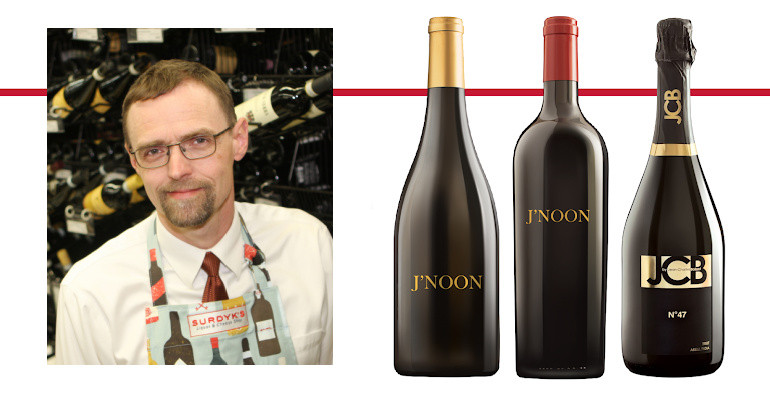In my position at Surdyk’s, I am presented with every kind of first-to-market opportunity from new brands from a new niche market. But I listen to all of them, on the off-chance, there might be something there that’s really intriguing. For example, this winter with a surprisingly brief pitch, local wine & spirits legend Marion Dauner sent me a short note asking me to consider a new project from India. While I approached the project with my signature dose of skepticism, this new brand presented just three wines – a red, a white, and a sparkling- it also brought a price point that says ‘we’re proud of this wine,’ with a name and packaging that is memorable and elegant. The project also brings the considerable experience of Jean-Charles Boisset, whose portfolio contains wines you likely are familiar with: Bonpas, Bouchard, DeLoach, Lyeth to name a few.
To be fair, I had a *record scratch/ freeze frame* moment when I realized that this wine was coming from India. I am aware that India, like China, has significant interest in developing a wine trade even though both are countries not typically thought of as possessing ideal winemaking conditions. It is widely known that India struggles with extreme heat and humidity (both are enemies of vitis vinifera) and, perhaps not as widely known, monsoon season dominates the months from June to September. Heavy rain, wind, and heat would seem to disqualify this region from growing wine grapes. But as JCB points out in his video, India is a vast country, and they have seemingly found the right place to grow grapes in the vineyards cultivated by the Fratelli Vineyards, a partnership between three families, Sekhri and Mohite-Patil brothers and the Secci brothers from Italy. Investments were made, wineries were built, and grapes began to grow. Local agronomists learned to prune their vines so that they grow on a Southern Hemisphere schedule (even though most Indian vineyards are at 17-20 degrees north of the equator). But even with all of this investment and learning, from my perspective, I assumed that the frozen upper Midwest of the United States might be the last place on earth where any of these wines would find an audience. And yet… here we are.

